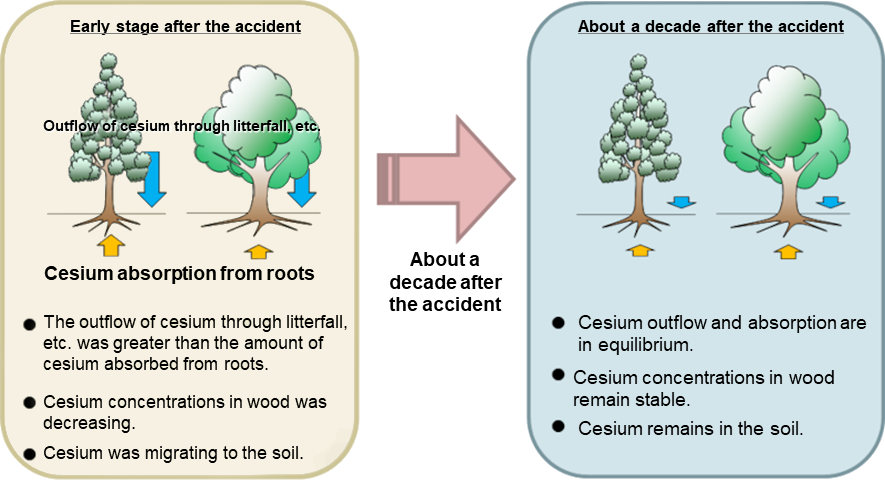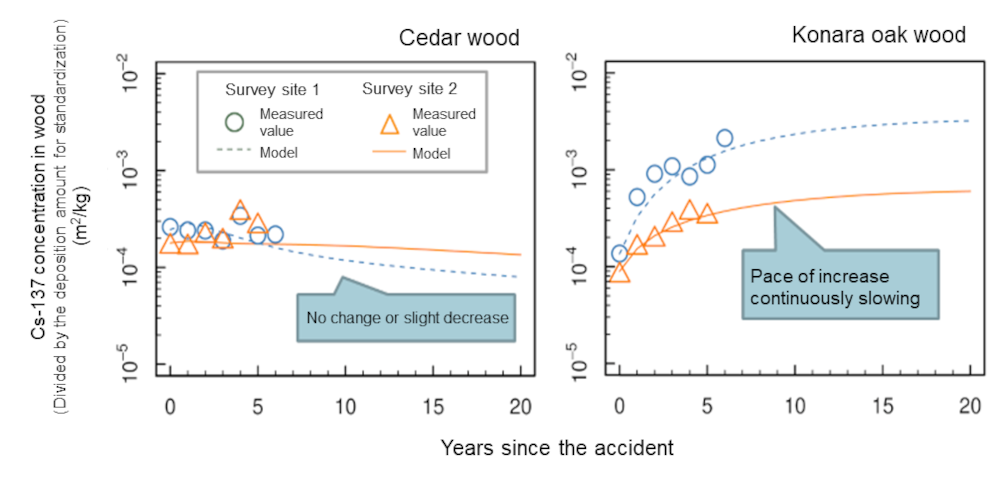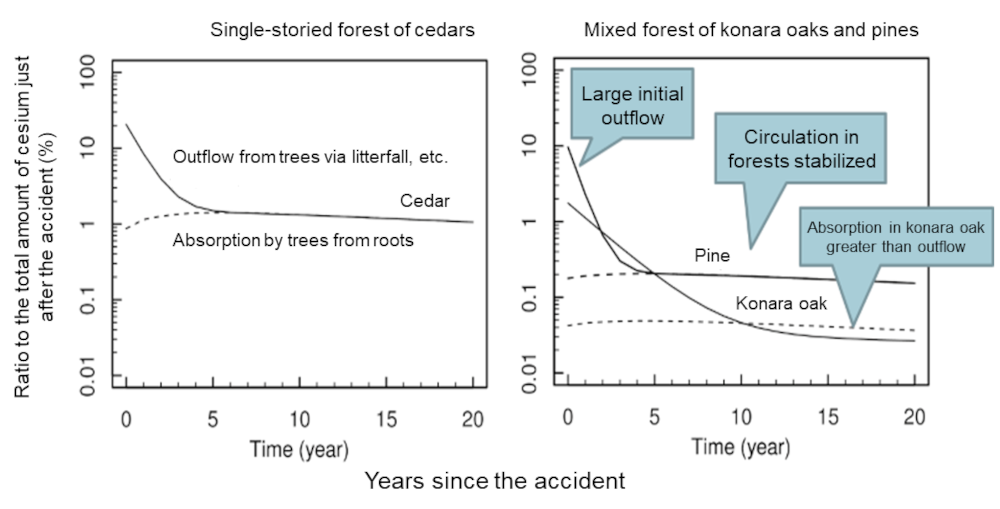Radioactivity Dynamics in forests
(2020)
QWill cesium distribution in forests continue to change in the future?
AThe results of simulations of cesium movement in forests provide the following predictions for the period of about two decades following the accident:
(1) Most of the deposited cesium will remain in the soil;
(2) Cesium concentrations in cedar wood will not change significantly, while those in konara oak wood will continue to increase at a slower pace;
(3) The movement of cesium in forests will decrease.
These suggest that the movement of cesium in forests is approaching an equilibrium state.

Fig.1 Images of cesium migration in forests in an early stage after the accident and in recent years

Fig.2 Predicted Cs-137 concentrations in cedar wood (left) and konara oak wood (right)
It is predicted that cesium concentrations in cedar wood will not change significantly, while those in konara oak wood will continue to increase at a slower pace.

Fig.3 Cesium migration simulation results for a single-storied forest of cedars (left) and a mix forest of konara oaks and pines (right)
The movement of cesium is numerically expressed by the outflow from trees via litterfall, etc. (solid lines) and the predicted absorption by trees from roots (dotted lines).
The two values are almost equal from the fifth to tenth years onward, suggesting that the movement of cesium is approaching an equilibrium state.
(Research results from the Forestry and Forest Products Research Institute and others)
Related articles
- How does radioactive cesium in forests move from trees to the ground surface? 【Movement in throughfall and stemflow】
- How does radioactive cesium in forests move from trees to the ground surface? 【Movement as particulate and dissolved states】
- Do sediment with high radioactive cesium concentration continue to be deposited on river bottoms?
- Is there a continuous input of cesium contamination to rivers from forests?
- Cs released to the environment by the forest fire?
